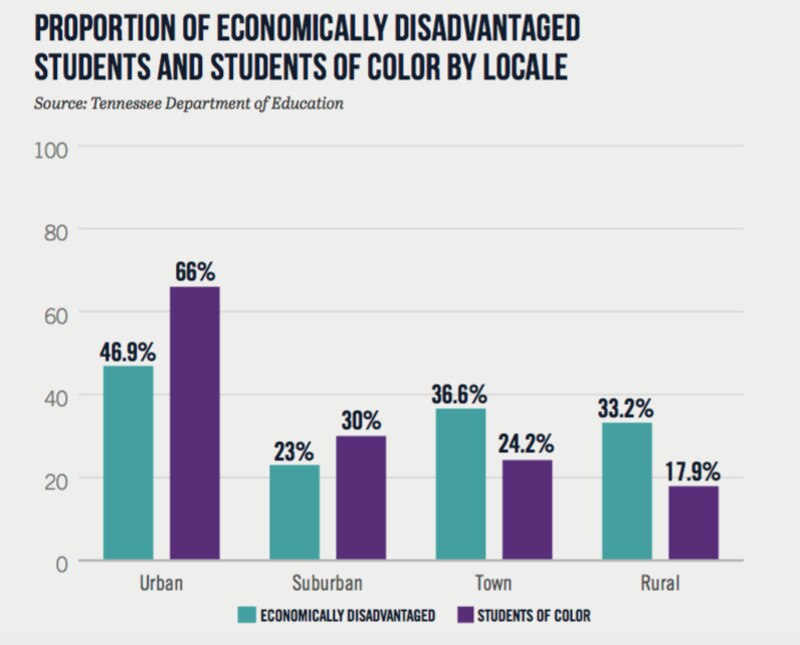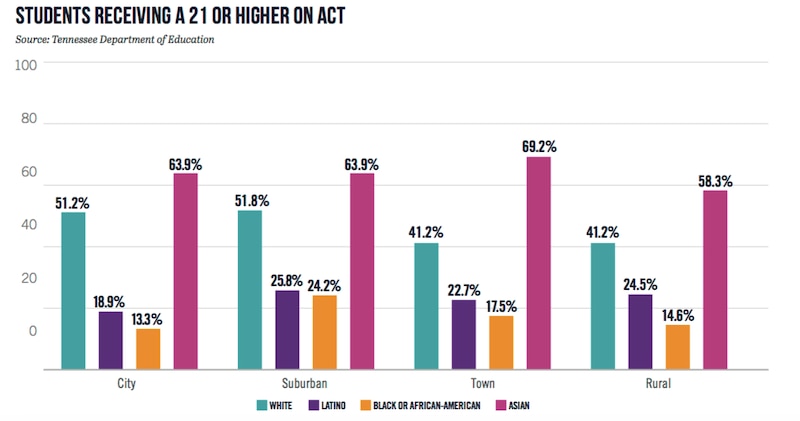For almost a decade, Tennessee has focused its school improvement work on its big cities where large numbers of students are of color, live in extreme poverty, and have disabilities.
But a new report says rural schools also face significant challenges in providing an equitable education to a third of the state’s students, all while serving a growing Latino population drawn to those areas mostly by agricultural work.
High poverty rates, lower median household income, opioid addiction, and limited access to technology and healthcare are among the issues in rural Tennessee, where fewer people are likely to attend college and more are likely to receive food stamps than their urban counterparts, according to economic research.
And with less industry and lower local tax bases to support their schools, rural districts also struggle to recruit, support, and retain effective educators.
Tennessee’s challenges mirror rural America, where school communities are being stretched by scarce resources and the need for more educators equipped to teach language skills to students from immigrant families.
The issues were highlighted Thursday by the Tennessee Educational Equity Coalition, a 3-year-old statewide organization that champions policies to address education disparities on behalf of more than 50 civil rights and education advocacy groups.
“Many of the issues that persist in our urban areas are challenges in our rural ones too, and we’ve got to find ways to look at different dimensions of the same problems,” said Gini Pupo-Walker, senior director of education and programs for Conexión Américas, a founding coalition member that serves Nashville’s Latino families.
The coalition released a report and convened some 70 stakeholders at Cumberland University in Lebanon, east of Nashville, to discuss the challenges.
The group wants the state to revise its education funding formula to take rural needs into account by providing each school with a flat rate, then distributing extra money based on the number of students who are from low-income families, struggle with a disability, are learning to speak English, or attend rural schools. That recommendation comes as the state is being sued by its two largest districts — in Memphis and Nashville — over the adequacy of their funding because of the needs of urban students.
The coalition also wants more districts to adopt student-based budgeting, which distributes funds to schools according to student characteristics and needs. And it wants the state to provide financial incentives to get more teachers in schools that are experiencing shortages due either to geography or content.
The recommendations follow a six-month Tennessee study based on state and federal data and tours of rural areas to interview teachers, principals, and district staff.
“There’s this feeling that urban is centric to innovation conversations and also to the education policy and practices being pushed in our state. I think rural schools feel left out,” said Bryce Warden, manager of research and policy for Conexión Américas.
Urban areas have the state’s highest proportion of students who are of color and are economically disadvantaged. Meanwhile, schools located in towns or rural locations have larger numbers of low-income students than they do students of color, although the white population is decreasing as more Latino families move in.

“Even with these smaller numbers of people of color within our more rural schools, student achievement and various school supports for all populations must remain a focus for equity-minded advocates regardless of size,” says the coalition’s report.
The growth in Tennessee’s immigrant population — accounting for 12 percent of its public school students in 2016 — presents special challenges for rural schools trying to teach smaller numbers of English language learners across multiple grades without additional state funding to staff up.
For instance, one district toured by the coalition serves about 50 English learner students across a wide geographic space, yet receives funding for only two English learner instructor positions. And according to one survey, 75 percent of the state’s rural schools have no instructional support staff beyond their administrators.
The coalition recommends placing an instructional specialist for English learners in each of the state education department’s eight regional offices to provide professional development and support for school communities.
The group also wants districts to set goals to give its students greater access to programs that provide early college credit. And it recommends investing in regional councils and higher education centers to expand pathways for education after graduation from high school.
Student outcomes don’t differ greatly by location, according to the group’s findings. But when it comes to college entrance exams, the coalition found “concerning gaps” among historically underserved student groups. Rural Latino high school students are two times less likely to score 21 or more on their ACT test compared to their rural white peers, and black students are three times less likely.

Adding to the challenge is that — just as Memphis is distinct from Nashville, Knoxville, or Chattanooga — Tennessee’s small towns and rural communities shouldn’t be painted with a broad brush.
“Rural is not a monolith but a compilation of hundreds of unique communities and circumstances,” says the report, which seeks to spotlight their various needs.
You can read the full report here.

